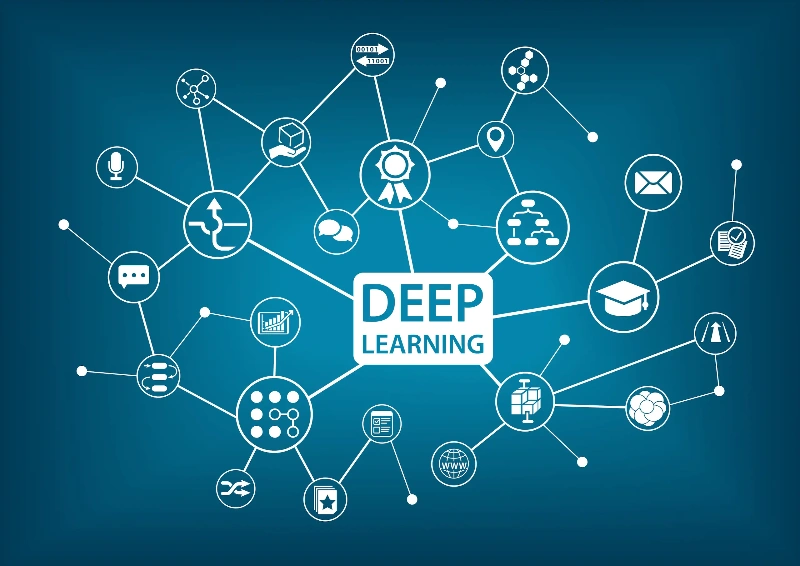Introduction
Imagine training a large language model, the kind that powers today’s most advanced AI applications. Now, imagine that process taking not weeks, but years. That was the reality before the powerful parallel processing of GPUs, or Graphics Processing Units, revolutionized deep learning. For any AI-driven enterprise, GPUs are no longer a luxury; they are the very engine of innovation, drastically accelerating the training and deployment of complex models.
However, acquiring and managing this powerful engine comes with a significant challenge. As models grow larger and more complex, so does the need for robust, multi-GPU clusters. This often leads to skyrocketing cloud computing costs and operational headaches, where expensive GPU resources sit idle or are not used to their full potential. The quest for the best GPU for deep learning is only half the battle—the other half is managing them intelligently.
This is where smart resource management comes in. In this article, we will explore the top NVIDIA GPUs for deep learning in 2024 and discuss how platforms like WhaleFlux—a specialized intelligent GPU resource management tool for AI companies—are essential for optimizing utilization, slashing costs, and ensuring your AI projects run smoothly and stably.
Section 1: Why GPUs Are Crucial for Deep Learning
To understand why GPUs in deep learning are so important, think about the nature of the work. Deep learning involves performing millions, even billions, of mathematical calculations simultaneously. A traditional CPU (Central Processing Unit) is like a skilled chef in a kitchen, excellent at handling one complex task at a time. A GPU, on the other hand, is like a massive team of line cooks, each working on a small, simple part of a larger recipe simultaneously.
This “team of cooks” architecture is perfectly suited for the matrix and vector operations that are fundamental to neural networks. This parallel processing capability makes GPU deep learningnot just faster, but fundamentally possible for large-scale models. Training a model without a GPU would be impossibly slow, hindering experimentation, iteration, and ultimately, progress.
For years, NVIDIA has been the dominant force in this space, creating a robust hardware and software ecosystem (like CUDA) that has become the industry standard. When we talk about a NVIDIA GPU for deep learning, we’re referring to a tool that is purpose-built for the immense computational demands of modern AI.
Section 2: Top NVIDIA GPUs for Deep Learning
Choosing the right GPU is a critical decision that depends heavily on your project’s scale, budget, and performance requirements. Let’s break down the top contenders for the title of best GPU for deep learning.
NVIDIA H100: The Enterprise Powerhouse
The NVIDIA H100 is the undisputed champion for large-scale AI training and high-performance computing. Built on a new architecture, it is engineered specifically for massive transformer models. With its dedicated Transformer Engine, the H100 can accelerate LLM training and inference to unprecedented speeds. If your work involves training foundational models or running inference on a global scale, the H100 is the most powerful good GPU for deep learning at an enterprise level.
NVIDIA H200: The Memory Giant
The H200 takes the power of the H100 and supercharges it with the industry’s fastest memory—HBM3e. This is a game-changer for memory-bound workloads. For incredibly large models that don’t fit into the memory of other GPUs, the H200 is ideal. It allows for processing even bigger chunks of data at once, reducing the need for complex memory management techniques and speeding up inference on massive models. It’s the top choice for pushing the boundaries of what’s possible in AI research.
NVIDIA A100: The Versatile Workhorse
While the H100 and H200 represent the cutting edge, the NVIDIA A100 remains an incredibly popular and versatile NVIDIA deep learning GPU. It offers a fantastic balance of performance, memory bandwidth, and multi-instance GPU (MIG) technology, which allows a single A100 to be partitioned into multiple, smaller, secure GPU instances. This makes it perfect for a variety of tasks, from training mid-sized models to handling large-scale inference workloads. For many companies, the A100 provides the best balance of performance and value.
NVIDIA RTX 4090: The Cost-Effective Prototyper
For research labs, startups, or teams focused on prototyping and experimentation, the NVIDIA RTX 4090 is a powerful good GPU for deep learning. While it lacks the specialized features and vast memory of its data center counterparts, it offers remarkable performance for its price in a consumer-grade card. It’s an excellent tool for developing and testing models before deploying them to a larger, enterprise-grade cluster. It makes powerful GPU for deep learningaccessible without a massive upfront investment.
Selecting the right tool from this lineup is the first step. The next, and often more complex step, is building and managing the cluster that will host them.
Section 3: Challenges in GPU Resource Management for AI Enterprises
Owning a fleet of powerful GPUs is one thing; using them efficiently is another. AI enterprises consistently face three major hurdles:
- Prohibitive Cloud Costs: Renting GPU instances from major cloud providers can quickly drain budgets, especially when resources are left running idle. The “pay-as-you-go” model, while flexible, can become a financial black hole if not meticulously monitored and managed.
- Underutilized Resources: Many organizations struggle with “GPU sprawl”—where clusters are provisioned but not fully utilized. A GPU might be dedicated to a single project that only uses 30% of its capacity, wasting 70% of a costly resource. This inefficiency is the enemy of profitability.
- Slow and Unstable Deployment: Manually managing a multi-GPU environment is complex. Configuring nodes, managing drivers, and orchestrating workloads across different machines can slow down development cycles and lead to instability, causing training jobs to fail and delaying time-to-market for AI products.
These challenges highlight a critical gap: having the best GPU for deep learning is meaningless if you can’t manage it effectively. This inefficiency stifles innovation and burns through capital.
Section 4: Introducing WhaleFlux: Smart GPU Resource Management for AI
So, how can you bridge this gap? This is where WhaleFlux comes in. WhaleFlux is an intelligent GPU resource management platform designed specifically for AI enterprises. Think of it as the intelligent control center for your entire GPU fleet.
WhaleFlux is built to tackle the core challenges of GPU management head-on:
Dramatically Lowers Cloud Computing Costs:
By dynamically optimizing how workloads are distributed across your multi-GPU cluster, WhaleFlux ensures that every bit of processing power is used effectively. It eliminates idle resources and maximizes utilization, which directly translates to lower costs and a higher return on your GPU investment.
Boosts Deployment Speed and Stability:
WhaleFlux simplifies the orchestration of complex AI workloads. It ensures that your large language models and other deep learning projects are deployed quickly and run with high stability, reducing failed jobs and accelerating your development pipeline from research to production.
To provide this powerful management, WhaleFlux offers access to a full spectrum of the best NVIDIA GPUs for deep learning, including the H100, H200, A100, and RTX 4090. We offer flexible purchase or rental options to suit your company’s financial strategy.
A quick and important note on our rental model: To provide the most stable and cost-effective environment for our clients, WhaleFlux does not offer hourly rentals. Our minimum rental period is one month. This policy discourages short-term, chaotic usage patterns and allows us to optimize our infrastructure for consistent, high-performance delivery, which in turn passes savings and reliability on to you.
Section 5: How to Choose and Manage Your Deep Learning GPU Setup with WhaleFlux
Navigating the world of GPU for deep learning doesn’t have to be overwhelming. Here’s a simple guide to choosing your hardware and how WhaleFlux makes the management seamless.
Choosing Your GPU:
- For Enterprise-Scale LLMs: Choose the NVIDIA H100 or H200. Their specialized engines and massive memory are built for this exact purpose.
- For balanced performance across training and inference, the NVIDIA A100 remains a superb and reliable workhorse.
- For Prototyping, Research, and Smaller Models: The NVIDIA RTX 4090 offers incredible value and performance to get your projects off the ground without a massive budget.
Managing Your Setup with WhaleFlux:
Once you’ve selected your GPU, WhaleFlux transforms the complex task of cluster management. Instead of wrestling with individual machines, you interact with a unified pool of resources. WhaleFlux’s intelligent software automatically allocates workloads to the most suitable and available GPUs, monitors their health and utilization, and provides clear insights into performance and costs.
This means your data scientists can focus on building better models, not on infrastructure logistics. WhaleFlux provides the tailored solutions for resource allocation and monitoring that allow your team to do their best work.
Call-to-Action: Ready to stop worrying about GPU management and start accelerating your AI innovation? Explore how WhaleFlux can help you build an optimized, cost-effective deep learning infrastructure. Visit our website to see how you can leverage the best NVIDIA GPUs with the smartest management platform on the market.
Conclusion
The journey in deep learning is powered by two key elements: selecting the right NVIDIA GPUs and managing them with unparalleled efficiency. From the raw power of the H100 to the accessibility of the RTX 4090, having the right tools is the foundation of success. However, without intelligent management, even the best tools can lead to wasted resources and stalled projects.
WhaleFlux addresses this critical need directly. By optimizing multi-GPU cluster utilization, it empowers AI enterprises to significantly reduce costs while simultaneously increasing the speed and stability of their most important deployments. As we look to the future, where models will continue to grow in size and complexity, the synergy between powerful hardware like NVIDIA’s GPUs and intelligent software like WhaleFlux will not just be an advantage—it will be the defining factor for successful and sustainable AI innovation.

